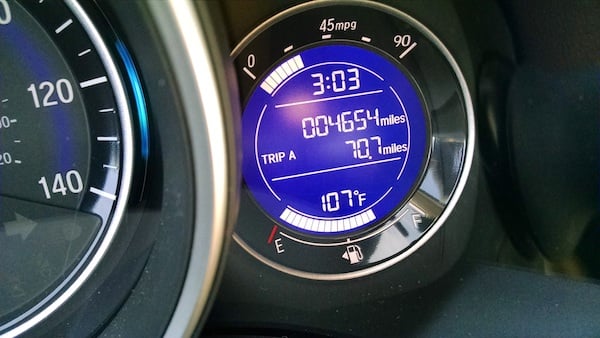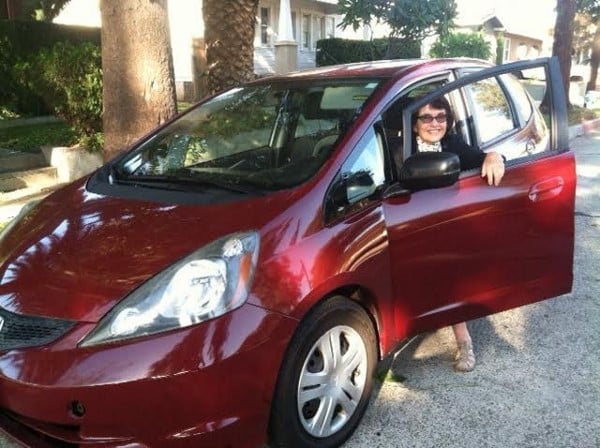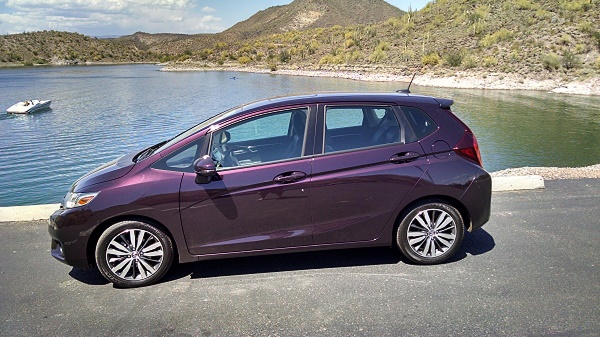For generations, car buyers, specifically Honda and Toyota buyers looked to the manufactured in Japan offerings to be the superior quality car or truck when shopping for a new ride. With world-wide, mostly regional centered manufacturing practices and parts sourcing, that may no longer be the case. Read about our Fit Arizona drive adventure here.

In rolls the Japanese manufactured “imported” 2017 Honda Fit
Yesterday I had the rare opportunity of walking a major Honda dealership while all of the sales force was setting up a regional “off site” sales event at the Lane County Event center, of Eugene, Oregon.
While the lot had been picked down to bare bones, two, just off the transport, pre-peeled and pre papered 2017 Honda Civic Fits presented an uninterrupted walk around and review of the vehicle’s disclosure Monroney Document -- as required by the federal government. This 80 year-young Los Angeles Professor loves here Honda Fit.

Here’s what I discovered
First of all, anyone that reads me knows that I’m a fan of Honda’s smallest and lowest MSRP offering in North America -- I like driving Fit, it’s fun and practical. Last year Fit production was returned to Japan from Mexico, in a move that would allow for greater facilitation of the popular Honda HR-V subcompact crossover, while facilitating growing demand for the Fit in Asia and Europe. Here’s what I discovered.
2017 Honda Fit World Car
Although now assembled in Japan, the 2017 Honda Fit is manufactured with 55% Japanese, 15% Mexican, and 30% parts of unknown origin -- Honda is a worldwide manufacturer, with Fit components and parts sourced from around the globe, Fit is a world car.

The first time I lifted the hood of the current generation Fit, I noted an EarthDreams ™ engine manufactured in Malaysia.
Truthfully, at this point in the international component car game, I’m not sure that it matters one way or another. The small displacement gasoline powered CVT shifted Honda Fit retains one of, if not the highest consumer satisfaction rating in the sub compact hatchback segment. And that’s what remains important to consumers today.












Comments
Hopefully it won't disappoint
Permalink
Hopefully it won't disappoint me just as much as this one. I mean
We had a 1995 civic with a 5
Permalink
We had a 1995 civic with a 5 speed. A bare bones car that had 195,000 km when we bought it. We sold it at almost 600,000 km. It was nothing but reliable. We bought a brand new 2017 Fit. It’s been nothing but a disappointment. We found the the quality of the parts making up the Fit are second rate at best. 31,000 km for a set of tires is unheard of. In the just over 4 years of ownership, we have changed all three windshield wipers 4 times now. My Chevy Traverse had the same windshield wipers for just under 150,000 km. The Fit has 48,000 km. Not sure what Honda was thinking but my money will go to Toyota for reliability or Kia as a throw away car. I mean the Kia has a 5 year 100,000 km warranty. Bumper to bumper. It’s a no brainer.